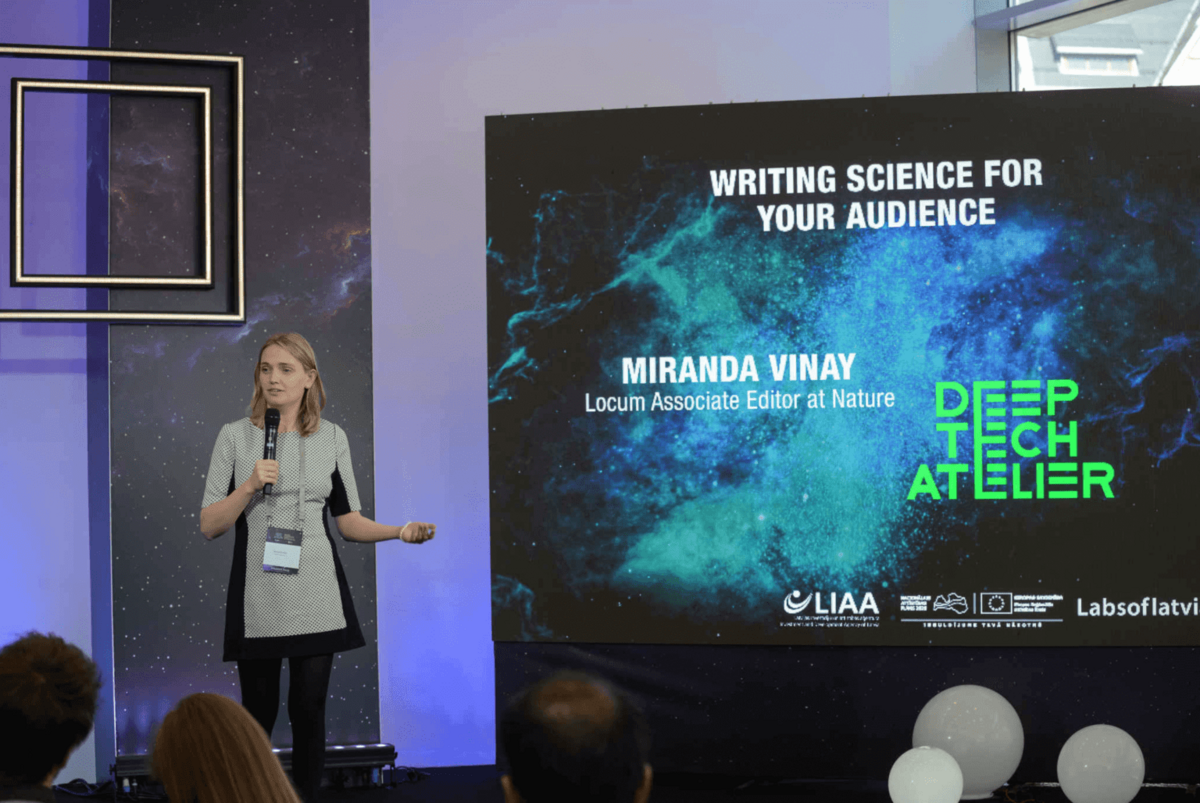
For the first time in 2023, Deep Tech Atelier dedicated an entire stage to the all-important topic of communications in science. A series of stellar speakers shared their practical insights into how and why, to communicate their science to a wider audience.
Arko Olesk, a lecturer on science communication at Tallinn University, emphasized the notion that one of the best and most effective ways to maximize the impact of the research is through communication and not just communication within academia, but rather, to society at large – the neighbour, the friend, the person at the bus station etc.
Science Communication professional Tobias Maier states that scientists are in a unique position. When it comes to communicating findings, science, or news, they have built-in authenticity and credibility that no politician, journalist, or analyst possess. As a result, scientists are able to do much more with their position when it comes to informing the public.
Miranda Vinay, an Associate Editor at Nature – one of the world leading scientific journals, shared many practical considerations to improve science writing, as well as good practice standards at Nature.
Miķelis Grīviņš, a researcher at the Baltic Studies Center and professor at RSU, shared his experience in the practicalities of conveying a message to the target group of the research they were doing.
Krista Krūmiņa, co-founder of Truesix, emphasizes the importance of simply starting to build visibility as early as possible. This is the so-called snowball effect, which is hardest to get moving at the beginning, but will yield results with time.